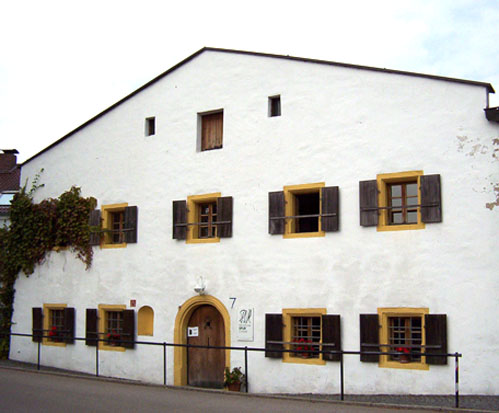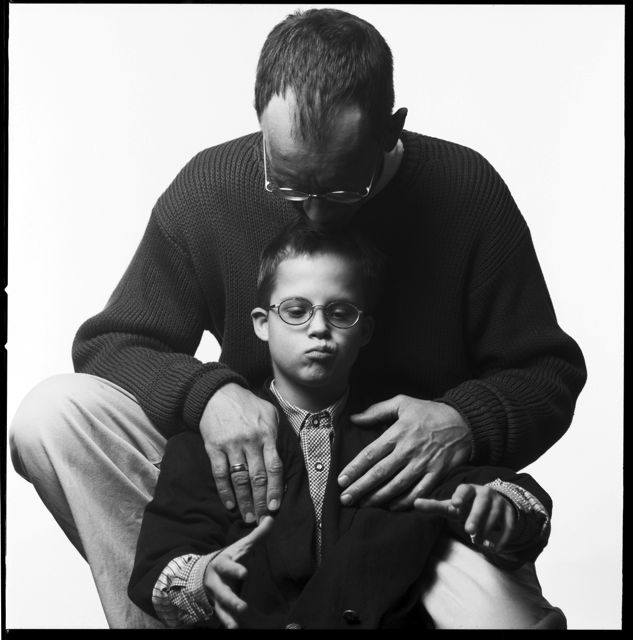|
Furth Im Wald
Furth im Wald (in Czech ''Brod nad Lesy'', resp. ''Bavorský Brod'') is a town in Bavaria, Germany, near the Czech border in the Bavarian Forest, northeast of Cham, and southwest of Domažlice. The city is known as ''Drachenstadt'' (Dragon City), a reference to Furth im Wald's annual ''Drachenstich'' (Slaying of the Dragon) play. The ''Drachenstich'', originally part of a Corpus Christi procession, was first mentioned in 1590. As one of the oldest folk plays in the German language, each year actors re-enact the legend of Saint George slaying the dragon. In 2010, the play became notable for using the world's largest walking robot, an animatronic dragon called Tradinno. Twin towns Furth im Wald is twinned with: * Ludres, France * Furth bei Göttweig, Austria * Domažlice, Czech Republic Gallery Photographs from the Bohnenstengel, A. (2002)Bayern Page 132–139 Image:Drachenstich Furth im Wald 01.jpg, Image:Drachenstich Furth im Wald 02.jpg, Image:Drachenstich Furth im ... [...More Info...] [...Related Items...] OR: [Wikipedia] [Google] [Baidu] |
Bayerisches Landesamt Für Statistik
The statistical offices of the German states (German language, German: ''Statistische Landesämter'') carry out the task of collecting official statistics in Germany together and in cooperation with the Federal Statistical Office of Germany, Federal Statistical Office. The implementation of statistics according to Article 83 of the Basic Law for the Federal Republic of Germany, constitution is executed at state level. The Bundestag, federal government has, under Article 73 (1) 11. of the constitution, the exclusive legislation for the "statistics for federal purposes." There are 14 statistical offices for the States of Germany, 16 states: See also * Federal Statistical Office of Germany References {{Reflist National statistical services, Germany Lists of organisations based in Germany, Statistical offices Official statistics, Germany ... [...More Info...] [...Related Items...] OR: [Wikipedia] [Google] [Baidu] |
Ludres
Ludres () is a commune in the Meurthe-et-Moselle ''département'' in north-eastern France. The inhabitants are called ''Ludréens''. In the past, inhabitants of Ludres were known by their neighbours as ''rôtisseurs'' ("roast meat sellers"), having once turned out en masse to watch their adulterous priest burned at the stake.Graham Robb, ''The Discovery of France'', p36, Picador (2007), , citing Vital Collet "Sobriquets caractérisant les habitants de villages lorrains" in ''Le Pays lorrain'', Nancy (1908), pp442-449 and Henri-Adolphe Labourasse, "Anciens us, coutumes, légendes, supersititions, préjugés, etc. du département de la Meuse" in ''Mémoires de la Société des lettres, sciences et art de Bar-le-Duc'', 1902, pp3-225 Population Twin towns Ludres is twinned with: * Furth im Wald, Germany * Furth bei Göttweig, Austria * Domažlice, Czech Republic See also * Communes of the Meurthe-et-Moselle department The following is a list of the 591 communes of the Meu ... [...More Info...] [...Related Items...] OR: [Wikipedia] [Google] [Baidu] |
Berlin University Of The Arts
The Universität der Künste Berlin (UdK; also known in English as the Berlin University of the Arts), situated in Berlin, Germany, is the largest art school in Europe. It is a public art and design school, and one of the four research universities in the city. The university is known for being one of the biggest and most diversified universities of the arts worldwide. It has four colleges specialising in fine arts, architecture, media and design, music and the performing arts with around 3,500 students. Thus the UdK is one of only three universities in Germany to unite the faculties of art and music in one institution. The teaching offered at the four colleges encompasses the full spectrum of the arts and related academic studies in more than 40 courses. Having the right to confer doctorates and post-doctoral qualifications, Berlin University of the Arts is also one of Germany's few art colleges with full university status. Outstanding professors and students at all its colleg ... [...More Info...] [...Related Items...] OR: [Wikipedia] [Google] [Baidu] |
Gruppe SPUR
Gruppe SPUR was an artistic collaboration formed by the German painters Heimrad Prem, Helmut Sturm, and Hans-Peter Zimmer, and the sculptor Lothar Fischer in 1957. They published a journal of the same name ''Spur''. ''Spur'' was subject to prosecution and was convicted "in the name of moral order". The Spur group joined and collaborated with the Situationist International, a restricted group of international revolutionaries, between 1959 and 1961. After a series of core divergences during 1960–1, the Spur members were officially excluded from the SI on February 10, 1962. The events that led to the exclusion were: during the Fourth SI Conference in London (December 1960), in a discussion about the political nature of the SI, Spur group disagreed with the core situationist stance of counting on a revolutionary proletariat; the accusation that their activities were based on a "systematic misunderstanding of situationist theses"; the fact that at least one Spur member, Lothar ... [...More Info...] [...Related Items...] OR: [Wikipedia] [Google] [Baidu] |
Helmut Sturm
Helmut Sturm (21 February 1932 – 20 February 2008) was a German painter. He was born in Furth im Wald. From 1952 to 1958, he studied at the Akademie der Bildenden Künste, Munich. After this he joined Heimrad Prem, Lothar Fischer and Hans-Peter Zimmer in founding Gruppe SPUR, which in 1959 entered the Situationist International. He had a six-month scholarship in Paris before returning to Munich for the SPUR exhibition in Galerie van de Loo. He collaborated with Hans Platschek, Asger Jorn, Jørgen Nash, Constant, Maurice Wyckaert, Giuseppe Pinot-Gallizio and Guy Debord. In 1961 he stayed with Nash at Oerkelljunga, Sweden with Prem, Zimmer and Dieter Kunzelmann. After the SPUR group was expelled from the Situationist International, they continued to do collaborative work, linking up with ''Wir'' in 1966 to form Geflecht. Sturm developed colorspatial anti-objects and had his first solo exhibition in the Galerie van de Loo, Munich. From 1970 he worked as an Art educator, dev ... [...More Info...] [...Related Items...] OR: [Wikipedia] [Google] [Baidu] |
Aloys Fischer
Aloys Fischer (10 April 1880 – 23 November 1937) was a German educationalist. Fischer was born in Furth im Wald, Bavaria on 10 April 1880. He attended the local elementary school. In 1891 he was awarded a scholarship to the grammar school based at the Benedictine Metten Abbey. He finished there 1899 and then attended the Ludwig Maximilian University The Ludwig Maximilian University of Munich (simply University of Munich or LMU; german: Ludwig-Maximilians-Universität München) is a public research university in Munich, Germany. It is Germany's sixth-oldest university in continuous operatio ... in Munich studying Classical Philology, German and history. After passing the First State Exam in 1902 he studied for a doctorate under Theodor Lipps. From 1903 to 1906 Fischer tutored the children of Adolf von Hildebrand. His dissertation ''On symbolic Relations'', was rewarded with a prize from the Faculty of Arts. In 1906 he married Paula Thalmann, with whom he had two sons Ernst ... [...More Info...] [...Related Items...] OR: [Wikipedia] [Google] [Baidu] |
Andreas Bohnenstengel
Andreas Bohnenstengel (born 9 June 1970) is a German photographer who lives and works in Munich. Biography Bohnenstengel began in 1991 as a press photographer for the regional daily newspaper ''Münchner Merkur''. Subsequently, he worked for magazines like ''Der Spiegel'', ''Stern'', and others, as well as the '' Rolf Müller office for visual communication''. Since 2004 he has taught photography for example at ''Schule für Gestaltung'' in Ravensburg. In his conceptual works, he discusses the phenomenae of society. Works by Bohnenstengel are held in the permanent collection of the Deutsches Historisches Museum in Berlin. Awards * 1995: Medienpreis für Sozialfotografie * 1996: Kodak European Gold Award * 1997: Die 100 besten Plakate des Jahres 1997. Poster: ''Glückskinder'' * 1999: Auszeichnung Deutsche Städtemedien, Kulturplakat des Monats * 2001: Nikon Photo Contest International Exhibitions * Summer 2022: ''Very nice that you exist'' contribution to the glockenbach bien ... [...More Info...] [...Related Items...] OR: [Wikipedia] [Google] [Baidu] |
Furth Bei Göttweig
Furth bei Göttweig is a town and municipality in the district of Krems-Land in the Austrian state of Lower Austria. The municipality consists of the following populated places: *Aigen *Furth bei Göttweig *Klein-Wien *Oberfucha *Palt *Steinaweg * Stift Göttweig. Population Twin towns Furth bei Göttweig is twinned with: * Domažlice, Czech Republic * Furth im Wald Furth im Wald (in Czech ''Brod nad Lesy'', resp. ''Bavorský Brod'') is a town in Bavaria, Germany, near the Czech border in the Bavarian Forest, northeast of Cham, and southwest of Domažlice. The city is known as ''Drachenstadt'' (Dragon C ..., Germany * Ludres, France References Cities and towns in Krems-Land District {{LowerAustria-geo-stub ... [...More Info...] [...Related Items...] OR: [Wikipedia] [Google] [Baidu] |
Town Twinning
A sister city or a twin town relationship is a form of legal or social agreement between two geographically and politically distinct localities for the purpose of promoting cultural and commercial ties. While there are early examples of international links between municipalities akin to what are known as sister cities or twin towns today dating back to the 9th century, the modern concept was first established and adopted worldwide during World War II. Origins of the modern concept The modern concept of town twinning has its roots in the Second World War. More specifically, it was inspired by the bombing of Coventry on 14 November 1940, known as the Coventry Blitz. First conceived by the then Mayor of Coventry, Alfred Robert Grindlay, culminating in his renowned telegram to the people of Stalingrad (now Volgograd) in 1942, the idea emerged as a way of establishing solidarity links between cities in allied countries that went through similar devastating events. The comradeship ... [...More Info...] [...Related Items...] OR: [Wikipedia] [Google] [Baidu] |
Bavaria
Bavaria ( ; ), officially the Free State of Bavaria (german: Freistaat Bayern, link=no ), is a state in the south-east of Germany. With an area of , Bavaria is the largest German state by land area, comprising roughly a fifth of the total land area of Germany. With over 13 million inhabitants, it is second in population only to North Rhine-Westphalia, but due to its large size its population density is below the German average. Bavaria's main cities are Munich (its capital and largest city and also the third largest city in Germany), Nuremberg, and Augsburg. The history of Bavaria includes its earliest settlement by Iron Age Celtic tribes, followed by the conquests of the Roman Empire in the 1st century BC, when the territory was incorporated into the provinces of Raetia and Noricum. It became the Duchy of Bavaria (a stem duchy) in the 6th century AD following the collapse of the Western Roman Empire. It was later incorporated into the Holy Roman Empire, became an ind ... [...More Info...] [...Related Items...] OR: [Wikipedia] [Google] [Baidu] |
Tradinno
Tradinno is a giant, animatronic, fire-breathing dragon, featured in the 2014 Guinness Book of World Records as the world largest walking robot. It plays the Dragon in the play ''Drachenstich'' in the German town of Furth im Wald. The name Tradinno is a mix of Tradition and innovation. History In 2001, it was decided that the old dragon prop in the play'' Drachenstich'' would be replaced with a new dragon. In 2002, Zollner Elektronik AG built a 1:4 scale concept design. The model was then showcased in a number of events. In February 2007, Zollner officially took up the project, and delivered the dragon on 2 July 2010. It has been used in the theater since 31 July 2010. Description The dragon weighs 11 tons, and is remote-operated. It is powered by a 2.0-liter turbo-diesel engine with 140 horsepower. It has a 12-meter wingspan The wingspan (or just span) of a bird or an airplane is the distance from one wingtip to the other wingtip. For example, the Boeing 777–200 has a ... [...More Info...] [...Related Items...] OR: [Wikipedia] [Google] [Baidu] |
_by_Erling_Mandelmann.jpg)


.jpg)